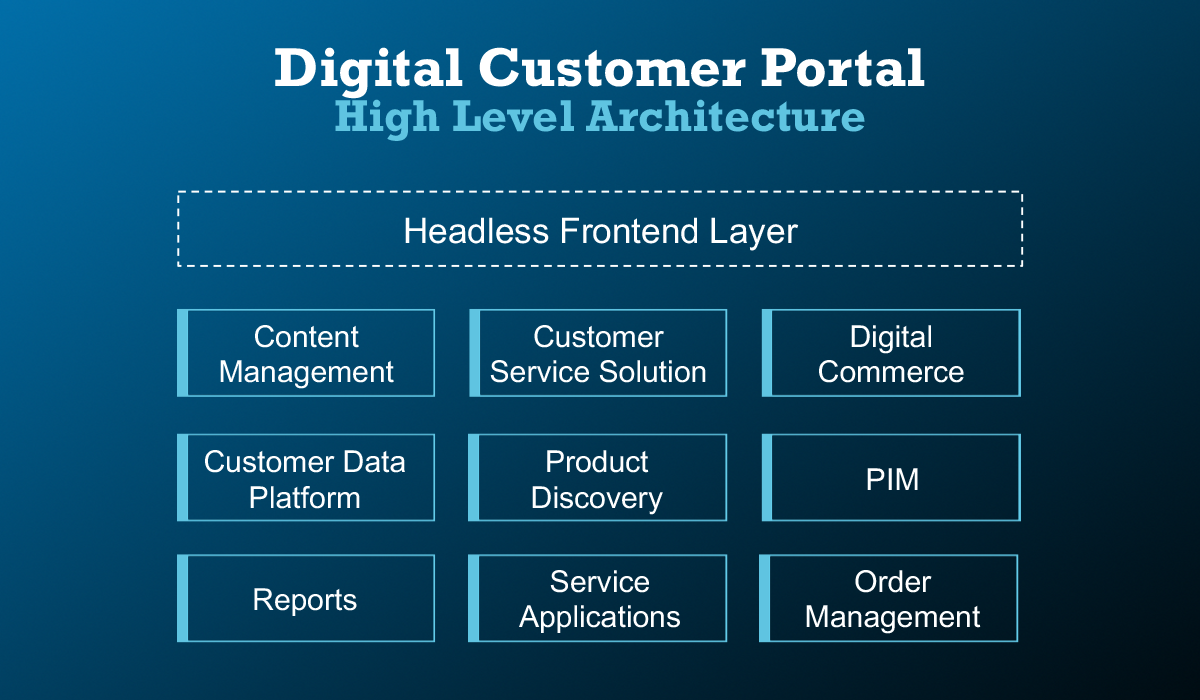3 Reasons Why B2B Companies Should Invest in a Digital Customer Portal Right Now

The days of gray and dull B2B experiences are over. As technology develops, B2B buyers have started demanding the same level of comfort and experience previously reserved for B2C shoppers. And that includes a much bigger focus on e-commerce and digital customer portals.
In fact, a McKinsey survey of B2B decision-makers shows that 86% of respondents “prefer using self-service tools for reordering, rather than talking to a sales representative.”
On the other hand, companies were happy to embrace this change when they realized how perfectly it complements their sales teams due to the efficiencies it could bring. Since a lot of administrative work shifts to the buyer, the staff can focus on more strategic tasks that bring more value to the company.
However, 2024 brings a new urgency to the topic for three main reasons:
- market focus on cost optimization
- advances in headless and composable technologies
- improved AI capabilities
Let’s explore each one in more detail.
Market Focus on Cost Optimization
The volatile political and economic situation brought on by the war in Ukraine and the increasing impact of the climate crisis considerably changed the market circumstances in the last several years.
As inflation soared worldwide, central banks were forced to increase debt rates in response. This increase made it more difficult for companies to opt for significant investments – as they are usually funded by debt – leading to a greater focus on business optimization instead of growth.
At first glance, it might sound illogical to invest in a digital customer portal in this situation. However, due to the efficiencies we mentioned, now is a great time to launch this type of project.
As you switch a part of the work to the customer, you not only save the associated costs but also make it easier to up-sell and cross-sell your products and services.
Suppose a buyer is using your digital customer platform to purchase a product. In that case, the system can look at the order and buyer’s past behavior, as well as the overall context, and suggest a complementary product that will bring additional value to the buyer. Or, in case of a complex product, a training service for their staff.
As a result, your customers are left impressed with the level of detail and attention they are receiving, while your sales and service teams get to focus on parts of their job that drive greater value for the company.
Advances in Headless Architecture
B2B brands have been interested in self-service portals for a while. Most initial attempts relied on integrating many different systems – like your digital commerce portal, customer service portal, etc.
Unfortunately, as the systems weren’t designed to be interoperable, these projects usually created more inefficiencies. Especially if you tried using solutions from multiple providers.
Thanks to advances in headless microservices architecture, B2B companies can now de-couple their frontend and backend systems.
In simple terms, you can set up a single customer-facing portal with many different solutions from different providers working in the background.

With this advance also came the idea of composable digital platforms. This approach allows you to pick and choose the best possible solution for your business and switch it out for a different one when it suits you.
All this results in a much simpler adoption process and lower investment budgets for B2B decision-makers.
Improved AI Capabilities
Customers often complain about traditional B2B self-service portals because they feel overwhelmed by the amount of work they have to do. This could happen due to a poor user interface, too many options to choose from, or too much manual work.
Whatever the cause, this feeling often leads to customers abandoning the platform and returning to regular channels, causing unhappiness on both sides.
With new AI solutions, B2B companies can prevent that by taking the brunt of manual work both from customers and their people.
Let’s take creating reports as an example. Instead of pulling numbers out of different parts of the portal, customers can use generative AI to do it for them. They just need to define the reporting criteria, let the model fetch relevant data, and generate a report tailored to those needs. All in a matter of minutes.
However, this doesn’t mean we should eliminate humans from the equation. AI can increase the speed of some operations, but human input is still invaluable in complex situations or cases of critical requests.
Final Thoughts on B2B Digital Customer Portals
Driven by the demand for cost optimization, B2B companies are turning to more innovative ways to engage with their customers. Advancements such as headless architecture and generative AI models pave the way for more engaging and cost-effective customer portals.
Integrating new technologies into service delivery streamlines processes and improves the strategic role of sales and service teams. This allows your business to quickly adapt to market changes and meet your customers’ evolving needs.
Authors and Contributors

Jörg Wesiak
Head of Consulting , NETCONOMY

Nikola Pavlovic
Content Marketing Manager, NETCONOMY
